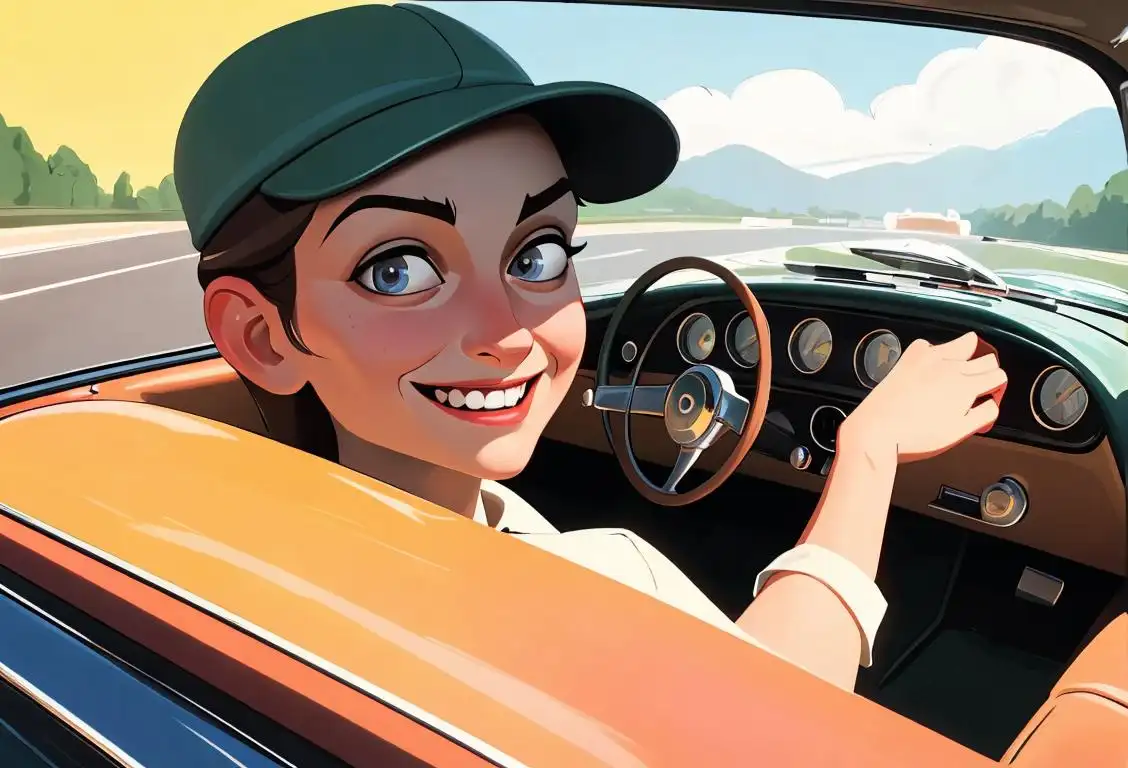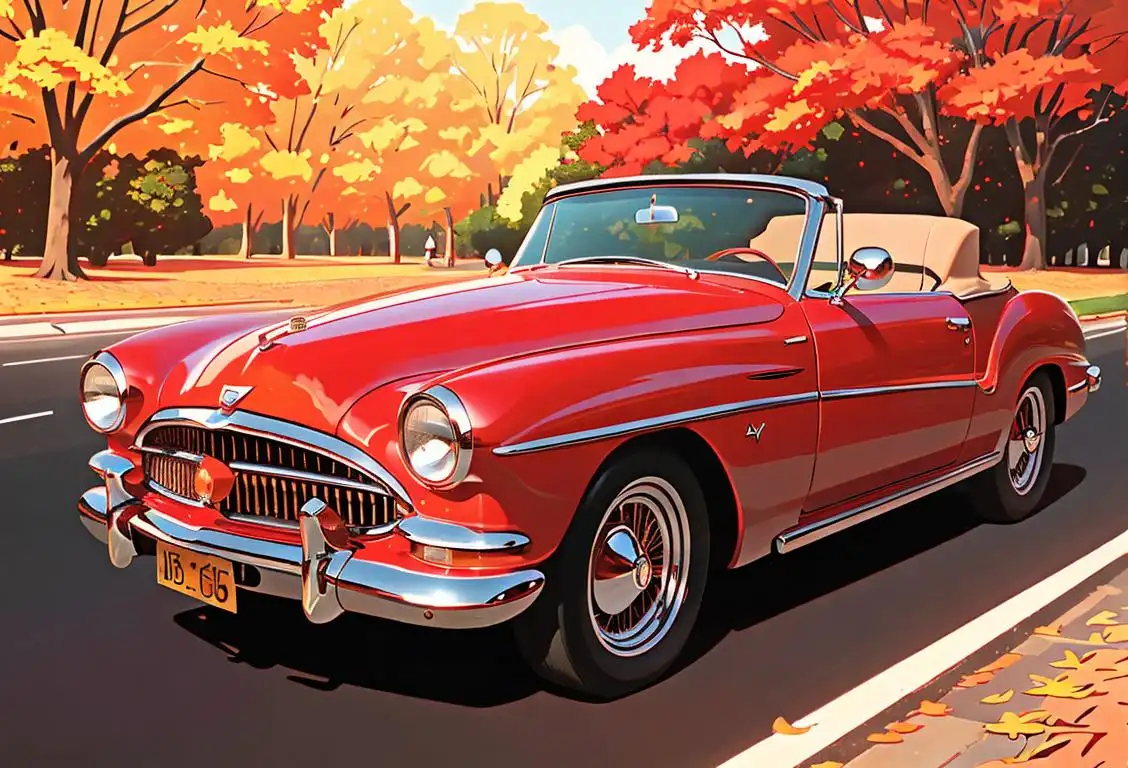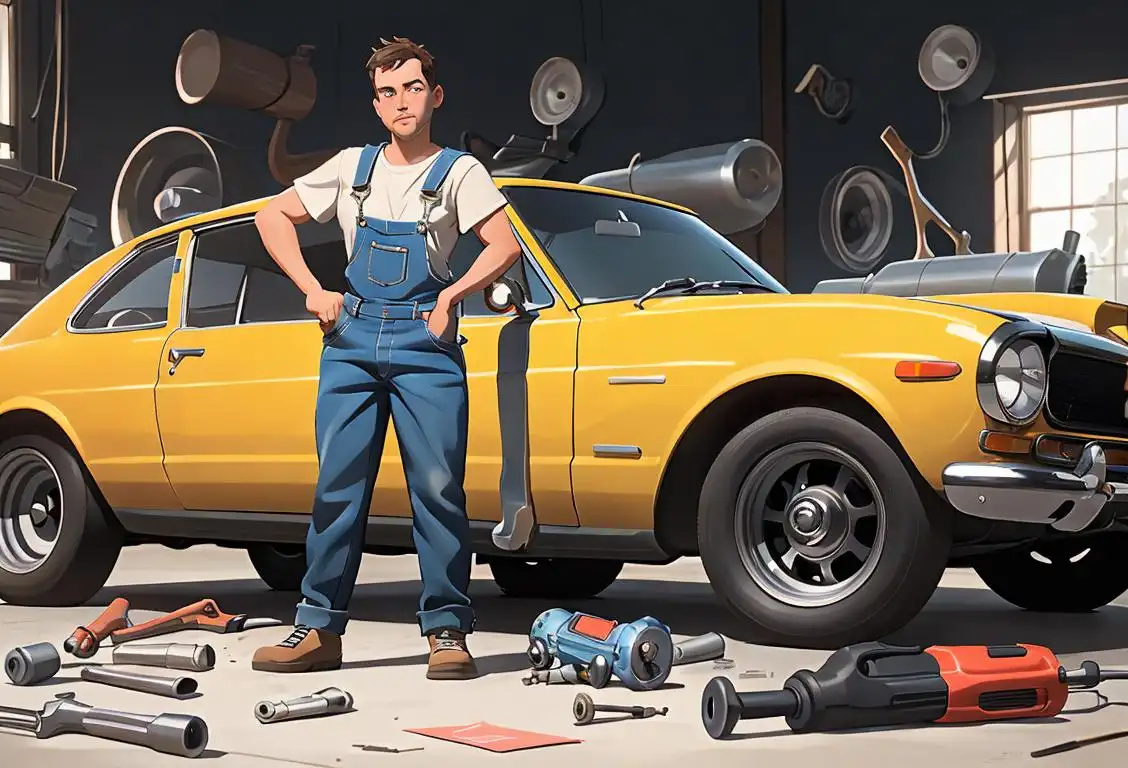National Car Horn Day

Honk honk! Get ready to celebrate National Car Horn Day, a day dedicated to the glorious invention that lets us communicate with our fellow drivers in a most melodious and, uh, loud way. Whether you use your car horn to kindly inform someone they've left their gas cap open or to express your extreme displeasure at being cut off in traffic, this day is all about celebrating the power of the beep beep!
When is Car Horn Day?
It's national car horn day on the 16th October.
The Birth of the Car Horn
Have you ever wondered how the car horn came to be? Well, let me enlighten you with a little bit of automotive history! The car horn, also known as a 'klaxon' (which sounds like a mean dinosaur but is actually just a fancy name for a horn), was invented by none other than Oliver Lucas in 1910. Lucas, an electrical engineer, wanted to find a way to ensure the safety of drivers on the road. He realized that a loud sound could help alert pedestrians and other drivers to potential dangers, and thus, the car horn was born!
Car Horn Etiquette 101
While car horns serve a practical purpose, it's important to use them wisely and with caution. Here are a few car horn etiquette tips to keep in mind:
- Use your car horn as a warning signal, not as a way to express road rage. Remember, honking doesn't magically make traffic disappear!
- Be mindful of noise regulations in residential areas. Your neighbors might not appreciate a symphony of honks at 2 AM.
- Don't be that person who uses the car horn excessively. One honk is often enough to get your point across.
Ways to Celebrate
So, how can you celebrate National Car Horn Day? Here are a few suggestions:
- Organize a car horn symphony (with permission from local authorities, of course) and create a harmonious orchestration of honks.
- Challenge your friends to a car horn melody contest. Who can create the catchiest tune using only their car horn? Beep-boop-beep-boop!
- Give your car a little TLC by cleaning your car horn. It deserves some love for all the times it has warned pedestrians and saved you from potential accidents.
History behind the term 'Car Horn'
1908
The birth of the car horn
The term 'car horn' originated in 1908, coinciding with the early days of the automobile industry. As vehicles became more prominent on the roads, the need for a signaling device to alert others of one's presence became apparent. The horn was introduced as a safety measure to prevent accidents and support communication between drivers.
1901
Birth of the Automobile
The term 'car horn' had its beginnings in 1901 with the birth of the automobile. This marked a major milestone in transportation history, as it introduced a new mode of travel that was faster and more convenient than horse-drawn carriages. As cars became more prevalent, the need for audible warning devices became apparent.
1921
The electric car horn revolution
In 1921, the electric car horn was introduced, replacing the previous hand-operated horns. The electric horn provided a more reliable and convenient option, as it required less effort and allowed drivers to focus on steering. This technological advancement also led to the widespread adoption of the term 'car horn' in popular culture.
1908
First Electric Horn Patent
In 1908, the first electric horn patent was granted to inventor Miller Reese Hutchison. Hutchison's invention utilized an electromagnet and a diaphragm to produce a loud and distinct sound. This electric horn laid the foundation for the modern car horn and revolutionized communication on the roads.
1914
Adoption of Klaxon Horns
The year 1914 witnessed the widespread adoption of Klaxon horns in automobiles. The Klaxon horn, invented by Joseph Henry Klaxon, employed a unique mechanical design that produced a loud and unmistakable honking sound. This innovation greatly enhanced safety on the roads by providing a clearer and more audible warning to others.
1950s
Variety in sound
During the 1950s, automobile manufacturers started incorporating different types of horns to distinguish their vehicles. This period saw the emergence of musical horns, such as 'La Cucaracha' and 'Dixie,' which played popular melodies when the horn was activated. These unique horns added a touch of personalization and fun to the car horn experience.
1970s
Honk honk!
In the 1970s, the term 'honk' became synonymous with the sound produced by car horns. It entered popular culture through movies, TV shows, and music, further solidifying the association between the action of using a car horn and the term 'honk.' The short and distinctive sound of the horn became a recognizable part of the urban soundscape.
1930s
Dual-Tone Horns
During the 1930s, dual-tone horns started gaining popularity. These horns produced two different pitches simultaneously, creating a distinctive sound that was easier to recognize. The dual-tone horn improved road safety by enabling drivers to differentiate between vehicles and respond accordingly.
Present day
Evolution and regulations
In the present day, car horns have evolved to include different tones and volumes to suit various situations. They serve as a communication tool for signaling danger, expressing frustration, or courteously alerting pedestrians and other drivers. Various countries have regulations in place regarding acceptable horn usage to maintain peace and minimize noise pollution in urban areas.
1960s
Introduction of Air Horns
In the 1960s, air horns made their debut in the automotive industry. Air horns relied on compressed air to generate a powerful and attention-grabbing sound. These horns found their place in larger vehicles like trucks and buses, providing an even more effective means of signaling and alerting others on the road.
Modern era
Integration of Horn Controls
In the modern era, horn controls have become standardized in most automobiles. Typically, a horn button is located on the steering wheel, allowing drivers to easily access it without diverting their attention from the road. This integration of horn controls ensures that the car horn remains a vital safety feature in today's vehicles.
Did you know?
Did you know that the loudest car horn ever recorded measured an ear-piercing 178 decibels? That's louder than a rock concert or a jet engine taking off! Remember, folks, use your car horn responsibly.Tagged
awareness fun automotiveFirst identified
16th October 2019Most mentioned on
16th October 2019Total mentions
4Other days
Collector Car Appreciation Day
Tune Up Day
Car Horn Day
Former Prisoner Of War Recognition Day
Heroes Day
Memorial Day
Handloom Day
Bestfriends Day
Liberation Day
Dance Day








